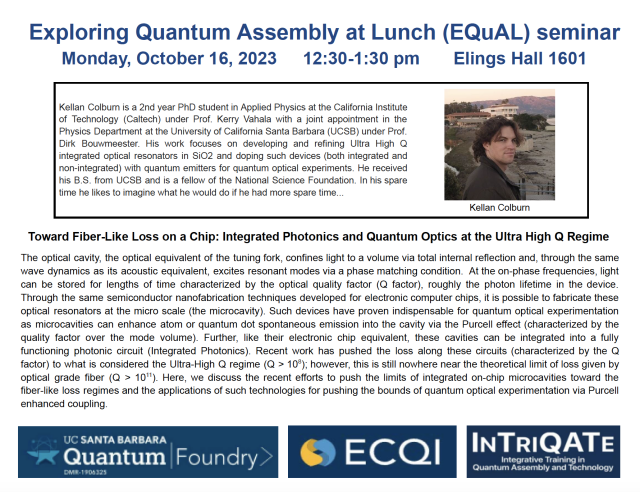EQuAL Seminar: Kellan Colburn

"Toward Fiber-Like Loss on a Chip: Integrated Photonics and Quantum Optics at the Ultra High Q Regime"
The optical cavity, the optical equivalent of the tuning fork, confines light to a volume via total internal reflection and, through the same wave dynamics as its acoustic equivalent, excites resonant modes via a phase-matching condition. At the on-phase frequencies, light can be stored for lengths of time characterized by the optical quality factor (Q factor), roughly the photon lifetime in the device. Through the same semiconductor nanofabrication techniques developed for electronic computer chips, it is possible to fabricate these optical resonators at the micro scale (the microcavity). Such devices have proven indispensable for quantum optical experimentation as microcavities can enhance atom or quantum dot spontaneous emission into the cavity via the Purcell effect (characterized by the quality factor over the mode volume). Further, like their electronic chip equivalent, these cavities can be integrated into a fully functioning photonic circuit (Integrated Photonics). Recent work has pushed the loss along these circuits (characterized by the Q factor) to what is considered the Ultra-High Q regime (Q > 108); however, this is still nowhere near the theoretical limit of loss given by optical grade fiber (Q > 1011). Here, we discuss the recent efforts to push the limits of integrated on-chip microcavities toward the fiber-like loss regimes and the applications of such technologies for pushing the bounds of quantum optical experimentation via Purcell-enhanced coupling.